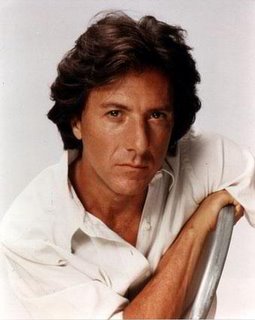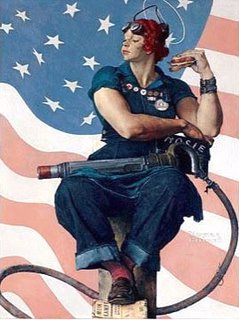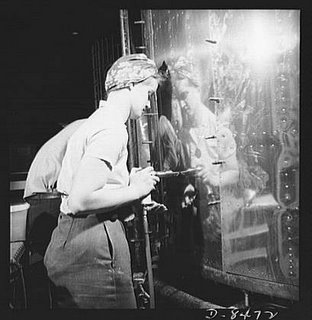Wednesday, November 30, 2005
FROM PAST TO PRESENT: SOME MOVIE LOSERS
http://jmcallister.blogspot.com
With the Thanksgiving season just a week in the past it only seems appropriate to list some "turkey" movies that have haunted us through the years and right up to the present. Usually the terms "turkey" and "money loser" are partners so I am working with that assumption. Some of these actually seemed like a good idea at the time while others gave rise to the question, "What in the world were they thinking?".
In the early days of motion pictures, there was a kind of "wing it" approach when it came to trying to come up with something the audiences might enjoy. After all, the movie business was a new entry on the entertainment scene so some trial and error was in order. Later on, when sound entered the business, a whole new set of rules applied.
So, what are some of these great ideas that turned into losers? It would take a book larger than "War and Peace" and all of James Michener’s epics combined to list them all so I will go strictly from what stands out in my memory.
Katharine Hepburn was in a slump in the mid to late 1930's. She just couldn’t seem to click in any project and then along came "Sylvia Scarlett" in 1935. In this one she is on the lamb with her father (Edmund Gwenn) so she disguises herself as a boy when they join a touring show. It kind of sounds like a couple of real winners from the early 1980's that made a fortune from the same basic theme: "Victor, Victoria" and "Tootsie". Unfortunately, this was the 1930's, an era with very different attitudes about such things, and "Sylvia Scarlett" was a flop with a cost of over $1,000,000 and a net loss of $363,000 in Great Depression dollars. This was a loss that was hard for struggling RKO studios to take and Hepburn was fired assuring her of a few more years of being considered "box office poison".
Let’s jump ahead a few years to 1987 and the classic dud, "Ishtar" starring Dustin Hoffman and Warren Beatty. With the success both of these guys have had, all we can say is, "Fellas, why?" This thing is basically a rip-off of the old Bob Hope-Bing Crosby "road" movies except those were funny. "Ishtar" cost $55 million and brought back $12.7 million, true turkey numbers. You have to hand it to Dustin, he bounced back the next year and won an Oscar for "Rain Man" plus despite the ineptitude, he received $5.5 million for doing "Ishtar", not bad bucks for 1987.
One of my favorites and a strong candidate for the all-time turkey movie award has to be "Gigli" from 2003. I like Ben Affleck and felt sorry for him during his relationship with Jennifer Lopez. He is a decent actor and seems like a genuinely nice guy and here he was tied up with a woman who can’t sing or act, has an inflated ego, and has somehow convinced a portion of the public to like her. As the hot couple of 2003, they just had to make a movie together and that was "Gigli". Unfortunately, this mess of silly scenes with an unpronouncable title was a showcase for Lopez (of course!) and was a major flop. Here are the figures: production costs of $56 million plus about $30 million more in promotional costs with first weekend box office receipts of $3.8 million. Will someone please put a cork in that bottle of red ink!
The above are notable losers. Then there are the unexpected winners that made great profits with low production costs like "The Blair Witch Project" (1999), "Tadpole" (2002), and "Star Wars" (1977).
I guess it proves that you can never accurately overestimate or underestimate the tastes of the movie going public.
THANKS FOR YOUR COMMENTS
Wednesday, November 23, 2005
A SALUTE TO THE AMERICAN WOMAN OF WORLD WAR II
With November being the month that contains Veterans’s Day, I believe that it is appropriate to honor another group of individuals that were instrumental in the war efforts of this country during World War II: the women of America.
World War II had broken out in Europe by 1939. In the same year, the Depression was still raging in the United States and we would not be involved in the war until December 7, 1941 with the bombing of Pearl Harbor. At this time it was thought that the woman’s place was in the home and her duties included housekeeping chores like cleaning, doing laundry, and taking care of the kids. This was about to change with the U. S. involvement in World War II; a change that was never going to be fully reversed to the so called "old days".
The war effort was being fought on two fronts which required a tremendous use of manpower for the military forces. The men who did not go into the military were deferred because of war involved employment, physical disabilities, age, or various other reasons. Somebody had to pick up the slack in the American workforce so the call went out to that large untapped source: the American woman.
At first there was some resistance to women flocking into the workforce but by 1944 there were 19 million women working in the war industry. There were various forms of propaganda issued to justify the use of women in these jobs, one of which, as mentioned by Leila Rupp in her book, "Mobilizing Women For War", was that the situation was only temporary and that "allowed the public to accept the participation of women in unusual jobs without challenging the basic belief about women’s roles." (TEXT CONTINUES AFTER PHOTO)
So, the U. S. was in a full scale war. The men were filling the tanks and the trenches and the women took their places in the factories turning out war goods. It all sounds very simple except for one thing: who was minding the house and kids while the women were working 48 hours per week in the plants? Answer: the women were doing that too.
I’ll tell ya, you had to be tough to be a woman in the U. S. during World War II. Here is an example of the daily routine for many women in that 1941-1945 era: For starters, many women had to work at night in order to balance a home and family with a job as described by Doris Weatherford in her book "American Women and World War II". These women would get off work in time to get home and see their kids off to school. They would grab a quick breakfast, then clean up the kitchen. Then it was off to bed about 10:00 a. m. to sleep for an hour and a half until the kids came home for lunch. After cleaning up that mess it was back to bed and sleep a couple more hours until about 3:00 when the kids got out of school. She would then do laundry if there was time and cook dinner with the limited amount of war rationed supplies available. The family would then eat supper when her husband got home about 6:00 (if he worked in a war related industry and was not fighting). After supper she would clean the kitchen (again!), then take another nap before getting up and going to work at about 10:00 p. m. and start the cycle again. Husbands rarely helped in the chores as this was considered "woman’s work". Thus, the working housewife averaged about 5 to 6 irregular hours of sleep per day.
As World War II ended in 1945, the reaction of working women was mixed. For some, it was wonderful to leave their hectic schedule and return to the home full time again. Some wanted to continue work but didn’t because it was the assumption of society that they should leave the workforce now that they weren’t as necessary as before. Then there were those who enjoyed the new independence they had found through their wartime jobs and wanted to continue with the income they were used to even though they faced demotions and pay cuts in the post war era. One thing was certain: World War II jobs had given women confidence in themselves that they had never known before and laid the groundwork for the advancement and education of women in the workforce today. Hats off and a salute to Rosie the Riveter and the women of World War II!
by Jim McAllister
I am going to be up front with this one. I want you to read this review of Kiss Kiss, Bang Bang but if you are not a fan of the unusual, this may not be for you. I thought this movie was hilarious in the way I enjoyed the movies of Mel Brooks and the old It's Garry Shandling's Show from Showtime in the 1980's. It is a total farce and a satire of detective movies, in particular the works of Raymond Chandler since the movie is in five sections with each being titled after a Chandler work.
Robert Downey, Jr. plays Harry Lockhart, a petty crook who accidently gets into acting and detective work as he pursues his childhood girlfriend Harmony Faith Lane (Michelle Monaghan) who went to Hollywood years before to become an actress. Harry meets private eye Gay Perry (Val Kilmer), who really is gay, and the race is on.
Downey acts as a narrator and says a lot of funny stuff, he also talks to the audience along with Kilmer at the end and it is all hilarious. Hilarious, that is, if your sense of humor is a bit unusual. I laughed all the way through. (Running time: 103 minutes, Rated "R" for language, nudity, violence)
Saturday, November 19, 2005
TV COMEDY, 1950-EARLY 1960'S
From the comedy-variety format to the sitcom, television provided a new outlet for humor.
Although television had been around in an experimental mode for several years, it never made a breakthrough into the public consciousness until the New York World's Fair of 1939. Unfortunately, shortly after that breakthrough, World War II arrived and the development of television was delayed until the mid 1940's. America was ready for the new medium as set ownership in the American home went from 1% to 50% from 1948 to 1953 and by the 1960's, 90% of homes had a tube. Today that percentage is in the 98% range.
So, what was the role of comedy in this success? One of the first successful comedy shows was the "Texaco Star Theater" which came on the air in 1948. It starred Milton Berle (aka "Uncle Miltie") and ran for seven years on NBC. Berle was the king of Tuesday nights with his raucous brand of comic material. In those early days of television, he was able to command 75% of the viewing audience. In 1950 "Your Show of Shows" made its debut starring Sid Caesar and Imogene Coca. It ran until 1954 and was a ninety minute extravaganza of live, original, comedy broadcast on Saturday nights on NBC.
The 1950-1951 season was a watershed era for television comedy because of the aforementioned shows plus, by this time, radio had been severely diminished by the new medium. In 1950, the comedy-variety program was the most popular form of comedy on television. There were twenty-five shows of this format during that time and only eleven situation comedies. This was, however, the last year that any form of comedy show was more popular than the situation comedy.
Star based comedy shows were popular at this time but there were not many of them. One that stood the test of time was "The Jack Benny Program" which ran for fifteen years. Benny's show, like many comedy hits of that era, was a carry over from the days of radio.
Also coming over from radio were several sitcoms such as "The Aldrich Family", "Beulah", "The Goldbergs", and one of the most successful of the 1950's sitcoms, "The Burns and Allen Show" starring vaudeville and radio favorites, George Burns and Gracie Allen.
The 1951-1952 season was a bad one for comedy. More radio comedies gave television a try with mixed results. Nineteen new shows came on the air but only one, "I Love Lucy", made a serious impact. What an impact it was as "Lucy" ran for six seasons on CBS and was continually number one in the ratings. It is probably the most loved show ever on television as it has been on since October 15, 1951 either with new episodes or in reruns. It also set some precedents as it was the first filmed sitcom, was the first to use a California setting, and was the first to film in front of a live audience.
From 1952 to 1955, sitcoms began to dominate the television comedy scene. The era of the comedy-variety show was fading, perhaps in proportion to those who were either dismissing the vaudeville mentality or were too young to remember it. The number of sitcoms grew from twenty-two in the 1952-1953 season to thirty-three in 1954-1955. Some of the big hits of the time were "The Adventures of Ozzie and Harriet" (another carry over from radio) which had its debut in 1952 and ran for fourteen years to make it the longest running sitcom of all time. 1953 brought "Make Room For Daddy" starring Danny Thomas, another success with an eleven year run. Also in 1953, the longest running comedy show of any kind, "The Red Skelton Show", was picking up steam. Red actually started on NBC in 1951 and spent twenty years on the air until 1971, mostly on CBS. While many radio comedians failed on the TV screen, Red was successful to the end and was canceled mainly because of demographics, not audience size. He gave his final "Good-night, God bless" on August 29, 1971.
From 1955 to 1960, comedy programming went into a tailspin as the mid to late 1950's was the era of the television western. Starting with "Gunsmoke" in 1955, the western built to twenty shows by 1957 and averaged thirty shows in production from 1958-1960. During that time the comedy-variety show continued to decline and situation comedies slipped in number to seventeen by 1959-1960.
By the early 1960's, the western had run its course as far as being a dominant form of television entertainment and the comedy format began a resurgence, especially in the form of the situation comedy. There was some adult entertainment that was successful such as "The Dick Van Dyke Show", which ran on CBS from 1961-1966, and only left the air because of the star's wish to move on rather than as a result of bad ratings. As we shall see, Dick Van Dyke's co-star, Mary Tyler Moore, was to go on to even more success in the 1970's with her own groundbreaking show, "The Mary Tyler Moore Show". Most of the comedy of this era, however, was of the "screwball" type with shows like "The Beverly Hillbillies", "Gomer Pyle", and "Bewitched" drawing large audiences.
MY NEW BLOG

Thanks for checking out the new blog. It will be a continuation of the old blog which was an expanded version of my newspaper column in the "INDEPENDENT" papers of Phoenix/Scottsdale. I hope you continue to check it out, updates are usually on Wednesday each week and for you regulars you know the stuff I write about (radio, TV, movies, music, books, sports, or whatever).
Thanks again for tuning in and tell your friends where I am at http://jmcallister.blogspot.com.
MOVIE REVIEW: "DERAILED"

When I saw this movie advertised as starring one of my favorite British actors (Clive Owen, "Croupier") and TV star Jennifer Aniston ("Friends"), I figured I had to check it out. After all, it is like mixing oil and water: Owen is one of the best in the UK and Aniston? Well, she spent ten years on a silly sitcom but I have to admit I liked her in "The Good Girl" (2002) and in one of my all time favorite cult flicks, "Office Space" (1999).
"Derailed" is a good mystery with a lot of action and plenty of twists and turns in the plot to hold your interest during its 100 minute running time. Never mind that it is one of the most preposterous stories that you will ever see. You're at the movies to be entertained, not to watch a boring reality experience and this one fits the bill. Isn't that what Hollywood is all about?
Owen plays Charles Schine, a man with a lot on his mind. His daughter is ill, he has just been canned by one of his biggest accounts at the advertising agency where he works, and although he has just met the sultry Lucinda (Aniston) on a commuter train, his troubles are just beginning. What those troubles are I will let you find out by going to this film but, rest assured, Charles is in for a wild ride.
Caution: When you see "Derailed" don't expect another "Citizen Kane" and don't talk to strangers on commuter trains! Owen and Aniston work together about as well as can be expected and Vincent Cassel is convincing as a bad guy. This one is rated "R" for violence, language, and a small amount of sexual action. JM








